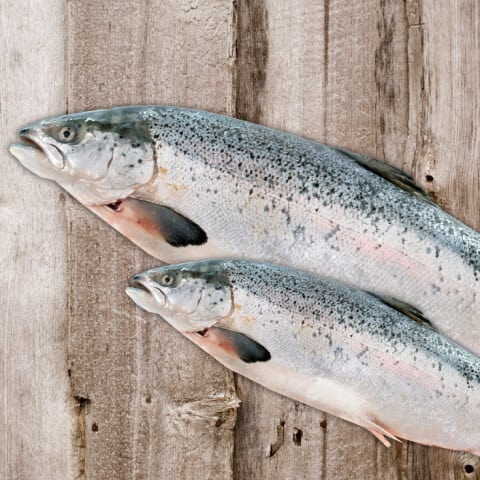This Dr. Axe content is medically reviewed or fact checked to ensure factually accurate information.
With strict editorial sourcing guidelines, we only link to academic research institutions, reputable media sites and, when research is available, medically peer-reviewed studies. Note that the numbers in parentheses (1, 2, etc.) are clickable links to these studies.
The information in our articles is NOT intended to replace a one-on-one relationship with a qualified health care professional and is not intended as medical advice.
This article is based on scientific evidence, written by experts and fact checked by our trained editorial staff. Note that the numbers in parentheses (1, 2, etc.) are clickable links to medically peer-reviewed studies.
Our team includes licensed nutritionists and dietitians, certified health education specialists, as well as certified strength and conditioning specialists, personal trainers and corrective exercise specialists. Our team aims to be not only thorough with its research, but also objective and unbiased.
The information in our articles is NOT intended to replace a one-on-one relationship with a qualified health care professional and is not intended as medical advice.
What Does FDA-Approved GMO Salmon Mean for Our Health?
June 13, 2017
GMO fruits. GMO vegetables. GMO animals? Thanks to approval by the Food and Drug Administration (FDA), genetically modified salmon is the first genetically modified animal to win approval from the FDA. (1) The GMO salmon has been deemed safe for consumption, ending an almost 20-year struggle by the fish manufacturer, AquaBounty Technologies, to sell the salmon in stores.
Because of a growth hormone in the GMO fish, this “Frankenfish” can grow to full market size in 18 to 20 months. Another “promotor” gene means that the fish can grow year-round, instead of seasonally.
For conventionally farmed and wild-caught salmon, it takes almost double the amount of time, or 28 to 36 months, to reach their full size. This ability to speed up salmon’s growth span will allow more of the fish to be commercially available, increasing consumption.
Proponents for the GMO salmon also point to the fact that wild-caught fish is unsustainable. Waters are being overfished, and without some type of alternative, availability will become increasingly rare, leading to a steep hike in prices.
More fish, cheaper prices … so what’s the problem with GMO salmon, then? Unfortunately, the dangers are vast.
The Problems with GMO Salmon
I’ve outlined the dangers of farm-raised fish before. The problems with GMO salmon are similar — yet they take things even further.
For starters, the FDA has said that the GMO salmon is just as nutritious to eat as non-GMO, farmed fish. That would be great if farmed fish were a healthy option. In reality, farmed fish is much less nutritionally dense than wild-caught salmon. In a wild-caught salmon vs. farmed salmon face-off, wild is clearly the winner.
Wild salmon is lower in calories and has half the fat of farmed salmon. Despite its leaner body, however, wild-caught salmon nutrition includes being packed with more calcium, iron, protein and potassium. And while farm-raised salmon has slightly higher omega-3 fatty acids, the good type of fat that fish is lauded for, it’s believed that the quality just isn’t up to par.
Farmed fish do come with something a little extra: contaminants, pesticides and other chemicals. For instance, a type of cancer-causing pesticide, polychlorinated biphenyls, exists in farm-raised salmon at 16 times the rate of wild salmon.
And researchers have found a chemical used as a flame retardant at levels 11 times higher than wild-caught fish. So when the FDA says that GMO salmon is just as healthy as farmed fish? Well, that’s not really something to cheer about.
Another threat with GMO salmon is its environmental impact. While the fish are supposed to be raised in fish tanks in warehouses on land — probably not how nature intended fish to be raised for food — environmental groups are concerned about what might happen if these GMO salmon managed to escape into the wild.
This could disrupt natural ecosystems, while also competing with wild fish for food and homes. The fear isn’t unfounded, as millions of farm-raised salmon escape from the holes in their nets each year.
The real kicker, however, is that even if you don’t want to purchase GMO salmon, you might do so unwillingly. That’s because the FDA will allow the fish to be sold without any label, the way foods made from GMO crops are currently not required to be labeled. It will become increasingly more difficult to avoid feeding GMO foods to your family.
What to Do About GMO Salmon
While the idea of GMO salmon being sold in stores is frightening, there are steps you can take to reduce your family’s risk.
The biggest is to avoid all farmed fish. While GMO salmon won’t have to be labeled as such, it will be labeled as farmed. You can ensure that your fish is GMO-free and as nutritious as possible by only purchasing wild-caught varieties.
If you’re concerned about overfishing, you might also consider expanding your fish repertoire and enjoying other types of fish. Sardines, for instance, are full of protein and are a budget-friendly option. You can also try some of these delicious, healthy baked fish recipes.
Finally, the first GMO salmon won’t be in stores for about two years, since it will take time for the first “batch” to grow. During that time, make sure your voice is heard and vote with your dollars.
Many grocery stores have already said that, due to customer dissatisfaction, they won’t be selling GMO salmon. Make sure your local supermarket knows that you don’t support GMO salmon and won’t buy it. Continue supporting smaller-scale fish mongers in your area.
While GMO salmon might be here to stay, there’s no reason it needs to be in your kitchen.











